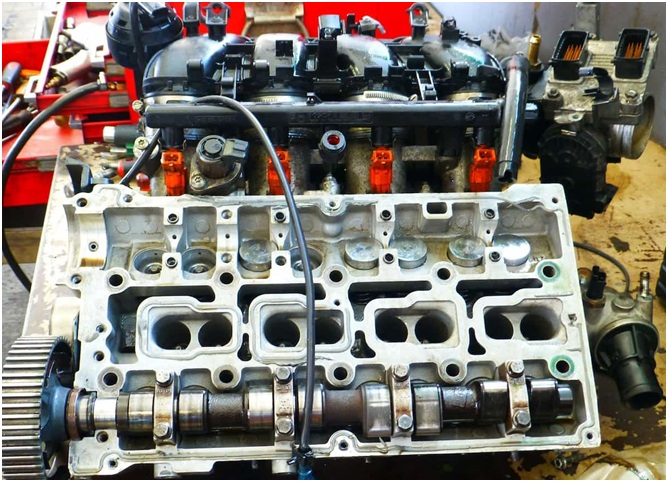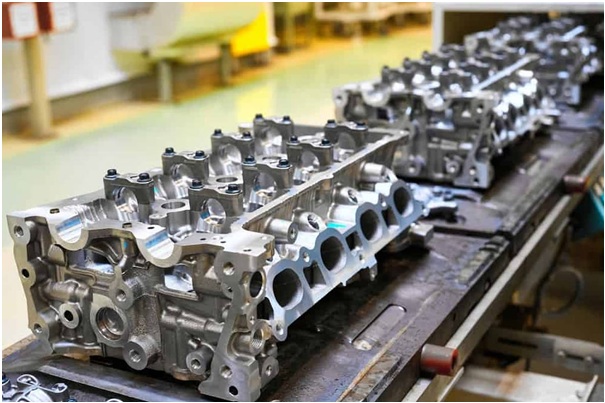Table of Contents
In an engine, the cylinder head shields the combustion chamber and ensures proper compression and combustion pressure. In addition to housing essential engine components, it is also integral to the overall performance of the engine. Damage to the cylinder head directly affects the engine’s efficiency. A cylinder head repair involves a series of procedures designed to correct issues hindering the engine’s efficiency. Having a problem with the cylinder head adversely affects the engine’s performance and efficiency.
However, numerous straightforward repair methods exist that demand little expertise or professional assistance. These methods offer a lifeline to a damaged cylinder head, potentially circumventing the need for costly replacements. Cylinder head reconditioners specialise in these repair techniques, utilising their expertise to salvage and refurbish cylinder heads effectively.
Their knowledge and skill in valve seal replacement, surface resurfacing, valve lapping, crack repair, and thread restoration enable them to revive damaged cylinder heads, ensuring the engine operates at its best without incurring the expenses of a full replacement. Here are some methods
Wrapped Cylinder Head Repair:
Addressing a warped cylinder head involves machining, which utilises a milling machine to level the mating surface, known as the deck. This ensures a proper seal with the cylinder block. However, access to this machinery is typically limited to professional engine rebuilders or cylinder head machine shops.
Machining removes material, impacting the assembly’s thickness and compression ratio. To compensate, experts recommend using a thicker gasket afterwards. Moreover, repeated machining is restricted due to material removal, emphasising the need for expert guidance to sustain optimal engine performance.
Pinning the Cracks:
Pinning stands out as the primary method for fixing cracks in cast iron heads due to its speed, reliability, and cost-effectiveness. Surprisingly, it’s also applicable for repairing aluminium castings. This technique proves relatively straightforward to grasp, requiring minimal specialised equipment a drill, guide fixture, and tap and doesn’t involve any heat application.
The process involves strategic drilling at both ends of the crack to prevent its spread, followed by hole drilling along its length. Overlapping pins are then inserted to bridge the crack, and an air hammer is used to peen and blend the pins, sealing the surface. Both tapered and straight pins find utility in this method, providing a versatile approach to repairing these critical engine components.
Welding Techniques:
Welding cast iron, specifically furnace welding, is often deemed a challenging skill, earning its reputation as the “black art” of crack repair due to the high heat requirements and necessary operator expertise. Acquiring proficiency in furnace welding cast iron demands extensive experience and practice. Seasoned welders emphasise that mastering this technique typically takes six months to a year of consistent dedication.
The process begins by preheating the cast iron head to 1,300 degrees F (cherry red) in an oven. This critical step minimises thermal shock and allows the metal to relax, reducing the likelihood of distortion when the torch is applied during the welding process. Given its complexity, specialised shops focusing on furnace welding cast iron heads have carved out a successful niche due to the intricacies involved in this meticulous repair technique.
Cylinder Head Rebuilding,:
Cylinder head rebuilding involves either machining or replacing damaged components like valves, valve seats, seals, springs, and other vital parts housed within the head. Typically, this intricate repair necessitates the expertise of a professional due to its technical nature. A skilled cylinder head rebuilder adeptly replaces worn or damaged components, ensuring safety and precision.
Additionally, they conduct intricate machining of the deck and ports, optimising gas flow through the passages, a technique known as cylinder head porting. This meticulous process aims to enhance engine performance by refining the airflow dynamics within the cylinder head, ultimately contributing to improved overall engine efficiency and power output.

Also Read: Why Is Stainless Steel Exhaust Good For Your Car Engine?
Cylinder Head Gasket Repair:
Repairing the cylinder head gasket is integral alongside a comprehensive cylinder head overhaul to ensure optimal results. This component’s condition significantly impacts the head’s functionality, as some cylinder head issues stem from gasket damage. For instance, a blown gasket can lead to the warping of the head assembly.
Gasket repair employs various methods, primarily focusing on sealing or resurfacing. Sealing addresses gasket holes, restoring its sealing capability while re-facing target issues arising from a distorted gasket, effectively mitigating leaks and enhancing the gasket’s integrity. The overall engine performance and reliability can be effectively restored by addressing gasket-related concerns in tandem with cylinder head repairs,
Repairing cylinder head issues doesn’t always necessitate a complete replacement or professional intervention. Implementing these straightforward repair techniques can save time, money, and the hassle of a full cylinder head replacement, ensuring the engine runs smoothly and efficiently.




